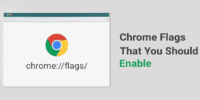Chromebook Vs. Windows Surface: Ideal Device For Creativity And Design

In the realm of creativity and design, the choice of an ideal device can greatly impact the efficiency and quality of work produced. This article aims to explore the comparison between Chromebook and Windows Surface, two popular options for individuals seeking a device that caters to their creative needs.
The comparison will be based on various factors such as:
- Design capabilities
- Software compatibility
- System performance
- Display quality
- Input options
- Portability
- Storage
- Price
- User interface
By evaluating these aspects objectively, readers will be able to make an informed decision about which device best suits their creative and design requirements.
The analysis will be conducted in an academic style, devoid of personal pronouns and subjective opinions, to ensure an unbiased and comprehensive assessment of the two devices.
Design Capabilities and Software Compatibility
The design capabilities and software compatibility of Chromebooks and Windows Surface devices are important factors to consider when determining the ideal device for creativity and design.
Chromebooks, being primarily web-based devices, have limited design capabilities compared to Windows Surface devices. While Chromebooks can handle basic design tasks, their software options are more limited. They primarily rely on web-based design tools and applications, which may not have the same level of functionality as desktop software.
On the other hand, Windows Surface devices offer a wider range of design capabilities. They are compatible with professional-grade design software such as Adobe Creative Suite, allowing users to access advanced features and tools. Windows Surface devices also offer touch-screen functionality and stylus support, enabling more precise and intuitive design work.
Therefore, for individuals in creative and design fields who require access to advanced software and tools, Windows Surface devices may be the more suitable choice.
System Performance and Speed
System performance and speed play a crucial role in determining the effectiveness of a device in facilitating creative and design tasks. A device’s ability to handle complex software and multitask seamlessly is imperative for designers and creatives who heavily rely on resource-intensive applications.
When comparing Chromebooks and Windows Surface devices, it is important to consider the following factors related to system performance and speed:
- Processing power: A device equipped with a powerful processor ensures smooth operation and faster execution of tasks.
- Memory capacity: Sufficient RAM allows for efficient multitasking and handling of large files.
- Storage capacity: Ample storage space is essential for storing and accessing numerous design files, software, and project resources.
- Graphics capabilities: High-quality graphics processing units (GPUs) enable designers to work with complex visual elements and render designs effectively.
Considering these factors will help determine which device is better suited for creativity and design tasks, ensuring optimal system performance and speed.
Display Quality and Resolution
Display quality and resolution are important factors to consider when selecting a device for creative and design tasks, as they significantly impact the visual clarity and precision of the work being produced.
Chromebooks and Windows Surface devices offer varying display qualities and resolutions, which can influence the overall user experience. Chromebooks typically have lower resolution displays, often ranging from 1366×768 to 1920×1080 pixels, which may result in less detailed and crisp visuals.
On the other hand, Windows Surface devices tend to have higher resolution displays, commonly ranging from 2256×1504 to 2736×1824 pixels, providing sharper and more vibrant visuals. This higher resolution can be particularly beneficial for tasks that require intricate details, such as graphic design or photo editing.
Therefore, users seeking optimal display quality and resolution for creativity and design may find Windows Surface devices more suitable than Chromebooks.
Input Options and Pen Support
Input options and pen support are additional factors to consider when selecting a device for creative and design tasks, as they can greatly enhance the user’s ability to interact with and manipulate digital content. These features allow for a more intuitive and natural input method, particularly for tasks that require precise control and freehand drawing.
When comparing Chromebooks and Windows Surface devices in terms of input options and pen support, the following considerations should be taken into account:
- Pressure Sensitivity: Both Chromebooks and Windows Surface devices offer varying levels of pressure sensitivity, which allows for more nuanced control when using a stylus or pen.
- Palm Rejection: Palm rejection technology is crucial for accurate pen input, as it prevents unintended touch inputs from interfering with the user’s drawing or writing.
- Pen Compatibility: Windows Surface devices generally have a wider range of pen options available, with some models supporting the use of industry-standard pen devices, providing more flexibility for users who have specific preferences or requirements.
Overall, the inclusion of robust input options and pen support can significantly enhance the creative and design capabilities of a device, making it an important consideration when choosing between Chromebooks and Windows Surface devices.
Portability and Battery Life
When considering the practicality and usability of a device for creative and design tasks, the factors of portability and battery life become crucial elements to take into account.
Chromebooks and Windows Surface devices differ in terms of their portability and battery life.
Chromebooks are generally known for their lightweight and compact design, making them highly portable. They have long battery life, often lasting up to 10 hours on a single charge.
On the other hand, Windows Surface devices offer a range of models with varying levels of portability. Some models, such as the Surface Pro, are lightweight and easily portable, while others, like the Surface Book, are bulkier.
The battery life of Windows Surface devices varies depending on the model, with some offering up to 14 hours of usage.
Ultimately, the choice between a Chromebook and a Windows Surface device for creative and design tasks depends on the individual’s specific needs for portability and battery life.
Storage and Expandability
Storage and expandability are important factors to consider when evaluating the practicality and usability of a device for creative and design tasks. The amount of storage a device offers determines how much data, such as images, videos, and design files, can be stored locally.
Chromebooks typically come with limited storage, usually around 32GB or 64GB, while Windows Surface devices offer a wider range of storage options, including higher capacities of up to 1TB.
Additionally, expandability is another crucial aspect, as it allows users to increase the storage capacity through external storage devices or memory cards.
Chromebooks generally lack expandability options, whereas Windows Surface devices often provide USB ports and memory card slots, enabling users to easily expand their storage.
Considering the need for ample storage and expandability, Windows Surface devices may be more suitable for professionals in the creative and design fields.
- Chromebooks offer limited built-in storage, usually 32GB or 64GB.
- Windows Surface devices provide a wider range of storage options, including capacities up to 1TB.
- Chromebooks typically lack expandability options, while Windows Surface devices often have USB ports and memory card slots for easy storage expansion.
Price and Value for Money
Moving on from the discussion on storage and expandability, the next important aspect to consider when comparing Chromebooks and Windows Surface devices is their price and value for money. Price is often a determining factor for many consumers, especially those on a tight budget. Chromebooks generally tend to be more affordable than Windows Surface devices, making them an attractive option for individuals seeking a cost-effective device for creativity and design.
However, it is essential to consider the value for money as well. While Chromebooks may be cheaper, Windows Surface devices often offer more advanced features and capabilities, which may justify the higher price tag for some users. Evaluating the overall value for money is crucial to ensure that the chosen device meets one’s specific needs and requirements.
| Feature | Chromebook | Windows Surface | ||||
|---|---|---|---|---|---|---|
| Price | Generally more affordable | Higher price range | ||||
| Features | Limited capabilities | Advanced features and capabilities | ||||
| Performance | Suitable for basic tasks | Suitable for demanding tasks | Durability | Less durable materials and construction | More durable materials and construction | |
| User-friendly interface | Simple and intuitive interface | Complex and customizable interface | ||||
| Support | Limited customer support | Extensive customer support and assistance | ||||
| Longevity | Shorter lifespan | Longer lifespan | ||||
| Brand reputation | Less well-known brands | Established and reputable brands | ||||
| Warranty | Limited or shorter warranty periods | Longer or comprehensive warranty coverage | ||||
| Design | Basic and functional design | Sleek and stylish design | ||||
| Connectivity options | Limited connectivity options | Wide range of connectivity options | ||||
| Customizability | Limited options for customization | Extensive options for customization | ||||
| Reliability | Less reliable performance | More reliable performance |
User Interface and Operating System Features
One important aspect to consider when comparing Chromebooks and Windows Surface devices is the user interface and operating system features.
Chromebooks run on Chrome OS, which is a lightweight operating system designed by Google. It offers a simple and intuitive interface, focusing on web-based applications and cloud storage. Chrome OS is known for its fast boot times and efficient performance, making it ideal for basic tasks such as web browsing and document editing.
On the other hand, Windows Surface devices run on Windows 10, a full-fledged operating system with a wide range of features and compatibility with various software applications. Windows 10 offers a more robust interface, allowing users to run traditional desktop applications and access advanced customization options.
This makes Windows Surface devices a better choice for individuals who require more flexibility and functionality in their creative and design work.
Frequently Asked Questions
Can you run professional design software like Adobe Photoshop or Illustrator on a Chromebook?
Yes, professional design software like Adobe Photoshop or Illustrator can be run on a Chromebook. However, this is possible through the use of cloud-based applications or by running Linux applications on certain Chromebook models.
How does the battery life of a Windows Surface compare to a Chromebook?
The battery life of a Windows Surface varies depending on the model, but generally, it is comparable to that of a Chromebook. Both devices offer long-lasting battery performance, allowing users to work for extended periods without needing to recharge.
Can you connect a stylus to a Chromebook and use it for creative tasks like drawing or sketching?
Yes, a stylus can be connected to a Chromebook and used for creative tasks like drawing or sketching. This feature allows users to engage in artistic activities and enhances the device’s functionality for creative purposes.
What are the differences in storage capacity between a Chromebook and a Windows Surface?
The storage capacity between a Chromebook and a Windows Surface differs. The specific storage capacity will vary depending on the model and configuration chosen by the user for each device.
Are there any limitations to using cloud-based storage options on a Windows Surface?
There are limitations to using cloud-based storage options on a Windows Surface. Factors such as internet connectivity, file size limitations, and potential security concerns can affect the usability and convenience of cloud storage on this device.







